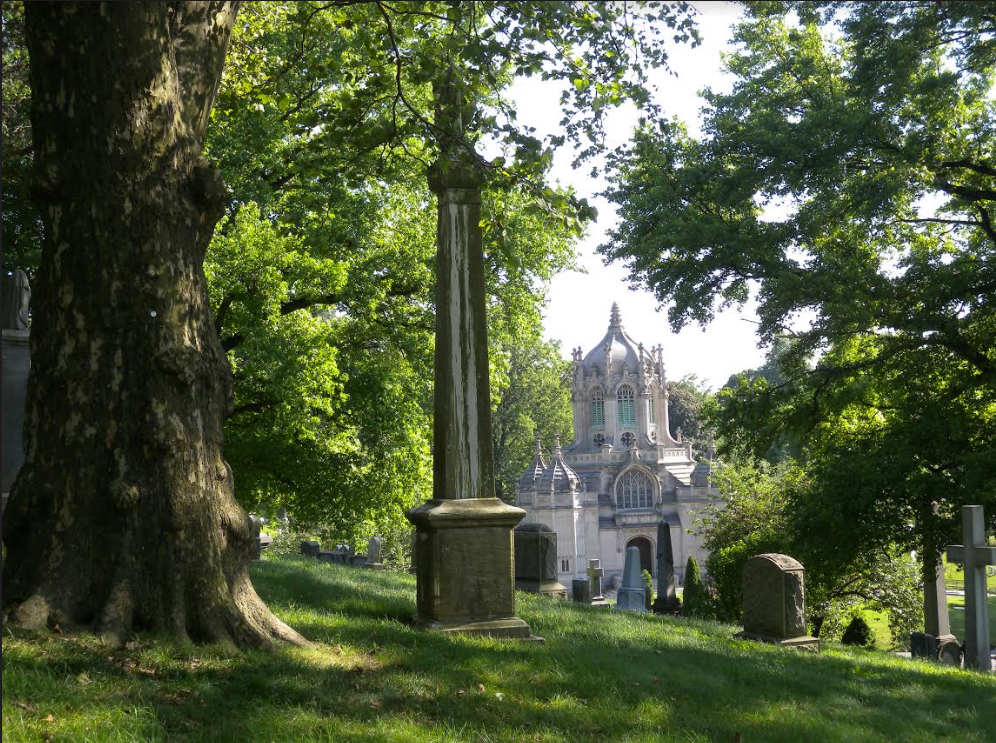Green-Wood Cemetery rolls out new tree-care initiatives

Green-Wood Cemetery has devised a new plan to take care of its 7,000-plus trees. Eagle file photo by Lore Croghan
The trees that shelter the dead at famous Green-Wood Cemetery also work 24/7 to protect the living.
The trees capture and store about 250,000 pounds of atmospheric carbon annually. That’s the equivalent of 88.3 cars’ greenhouse gas emissions for a year.
The trees remove around 12,000 pounds of pollutants from the air annually: ground-level ozone, carbon monoxide, sulfur dioxide and particulate matter.
